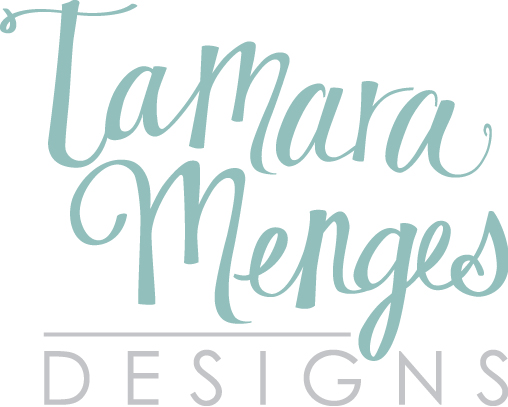By Jessica Tomes, TMD Social Media Director
“In everything give thanks; for this is God’s will for you in Christ Jesus.” 1 Thessalonians 5:18
Messages of fortune and goodwill on slips of papyrus were the first known greetings exchanged in Chinese and Egyptian culture. In the 1400s, Europeans practiced exchanging notes as a new way of social expression, writing on paper and hand delivering cards. In 1856, Pouis Prang, a German immigrant, brought greeting cards and notes to America. (www.ehow.com)
Thanksgiving is a special time in our culture. Many of us engage in challenges to both be, and share our thankfulness with others the entire 30 days of November. While this is certainly a praiseworthy notion, shouldn’t we strive to be more thankful all year long? One way to show our gratitude to others for the many gifts we are given, beyond Thanksgiving, is to truly hone (and then implement) the increasingly “archaic” task of crafting a handwritten thank you note. After all, that is the Southern way.
Despite our digital times, while in some (few) instances a thank you email or text message is appropriate, a handwritten thank you note is almost always preferred. Emily Post (still the modern day authority on manners and etiquette) says the rule of thumb is anytime you receive a gift and you are unable to thank the person in the moment, you should send a note. And thank you notes should be sent for shower gifts regardless, she says.
How to Craft a Well Written Thank You Note
- You should always personalize the content of the thank you note. Do not send an obviously formatted thank you note devoid of any details relating to the gift giver.
- You should select stationary that represents your individual personality, or your unique couple personality (for wedding, engagement, and anniversary gifts). This does not mean you have to choose the most expensive stationary, however. There are many great options on the market, in varying price ranges.
- In the event of a monetary gift, do not cite specific monetary amounts. Do share what you intend to do with the money or the gift certificate (if it’s appropriate).
- Take your time and keep it legible. If your cursive is unreadable, print (and vice versa). Use a pen that will not smudge.
- The better late than never rule applies. Even if it’s late, just send it.
Southern Living Magazine’s Editor-at-Large, Kimberly Schlegel Whitman, says we should think in threes. First, we should try to send the thank you note within three days of attending an event or receiving a gift. Second, she says the thank you note only technically has to be three lines long (not including the salutation or the closing). Here are a few more tips from Kimberly.
“Thanks for the gift!”
Line One: Thank the giver for the gift (be specific).
Line Two: Describe how you plan to use the gift. For example, “The silver picture frame is going to look lovely on the mantel in our living room.”
Line Three: Reference a future meeting or greeting.
“Thanks for the invite!”
Line One: The first line should express gratitude for being included.
Line Two: Point out a specific moment or memory from the party.
Line Three: Share your hopes that you will meet again soon.
When to Say Thanks
Emily Post provides explicit instructions regarding most social situations. Here is what she has to say on the subject.
- For Wedding Gifts: Thank you notes should be sent within three months of receipt, but as soon as possible is better.
- For Congratulatory Gifts: You should send a note—close friends and family don’t always need a handwritten note, but this is a nice touch.
- For Gifts Received in Illness: As soon as the sick person feels well enough, he or she should send a note.
- For Condolence Notes or Gifts: Anyone who sent a gift, a card, or made a donation should receive a thank you. A close friend or relative could write the notes on behalf of the recipient.
“Thanks for the interview!”
Wallstreetpersonnel.com suggests sending a thank you email within 24 hours of your interview—you want to keep your name fresh on the mind of the interviewer. While a handwritten thank you note is always a nice gesture, snail mail may take too long in this instance. Keep the note short and to the point—hiring managers are usually highly busy individuals, and they will be impressed with your promptness and conciseness. Of course every situation and job is different. When in doubt, you could always send a quick thank you email in addition to a handwritten note. Click here to view a sample thank you email template.
I am a huge stationary and paper junkie. I absolutely adore sending and receiving letters and packages. Some of my favorite sources for stationary and thank you notes are Barnes and Noble (very moderately priced), Target (a steal when you find something you love), www.minted.com (a little pricier), www.katespade.com (very tongue in cheek), www.tinyprints.com (this is my favorite online source for invitations), www.laylagrayce.com, and my newest favorite is www.riflepaperco.com. You can never go wrong with www.etsy.com. I could get lost for hours on Etsy. And probably go bankrupt. Here are a few of my favorite online designs of the moment:

From left to right: Rifle Paper Co. ($4.50-$18), SincerelyYoursPaper from Etsy ($23), Boatman Geller from Layla Grayce ($66), Kate Spade from Barnes and Noble, AshleyPahl from Etsy ($8), Dawn and Emil from Etsy, Minted.com ($76), DeanPenn from Etsy ($18), Barnes and Noble ($5.39).
As Americans we are so incredibly blessed. We don’t have to walk barefoot fifteen miles for water. Immunizations and education are commonplace and readily available. We experience many religious and political freedoms others only dream of experiencing. This year–not just this Thanksgiving– let’s try to be more thankful and appreciative for all of the little and big things. And to show our gratitude whenever we can.
